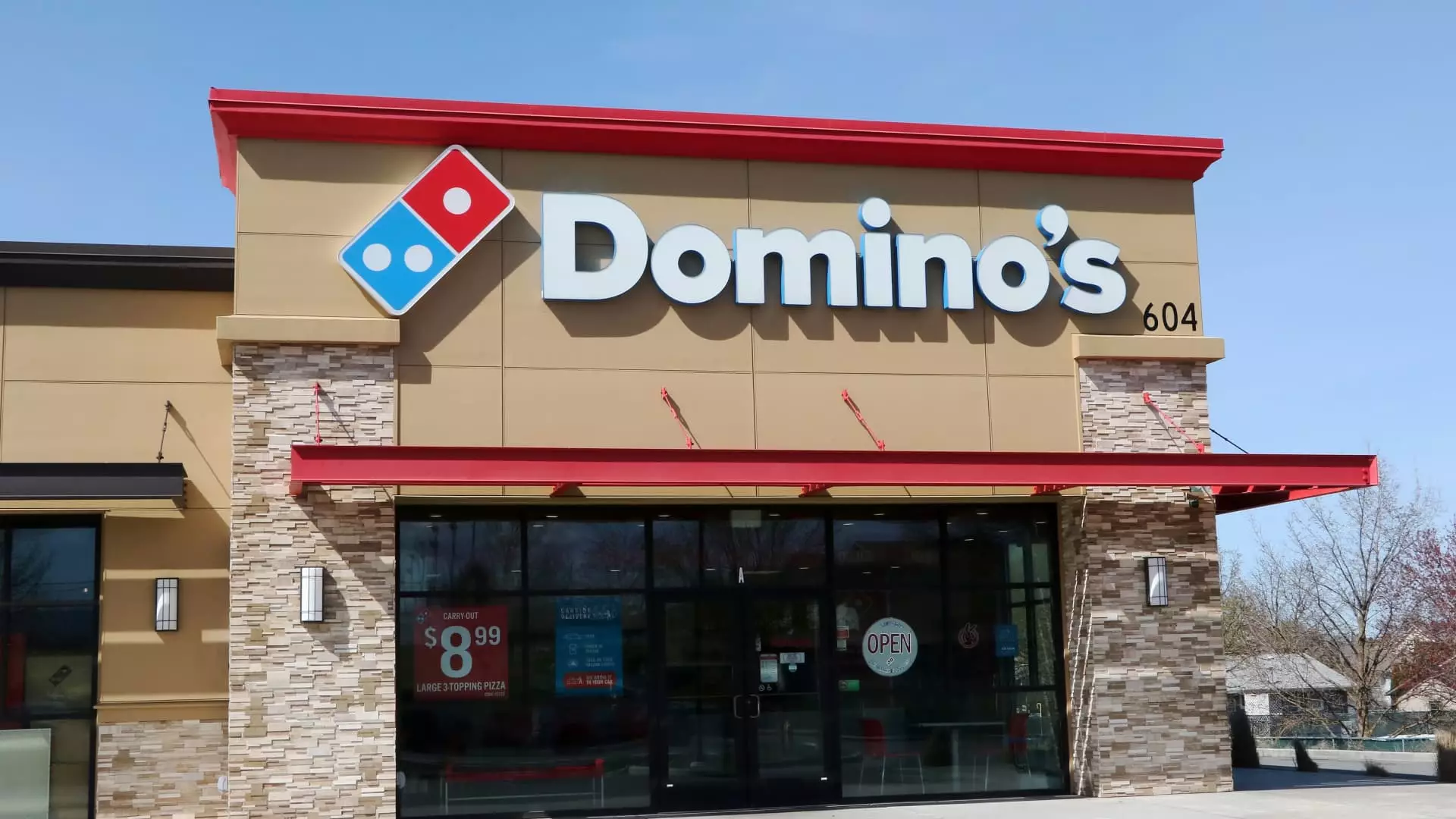In an era marked by economic uncertainty and relentless inflation, many food industry giants are scrambling to adapt, often resorting to superficial discounts that fail to foster genuine loyalty. Domino’s Pizza, however, is pursuing a more audacious path—leveraging strategic innovation and a confident outlook to carve a bigger slice of the market. CEO Russell Weiner’s assertion that current headwinds serve as “tailwinds” for the brand is both provocative and revealing. It suggests a mindset that refuses to capitulate under economic pressures and instead views adversity as an opportunity for growth. This perspective is refreshing, yet it demands a sharp, critical eye: are Domino’s ambitions rooted in sustainable strategies, or are they merely riding a fleeting wave of consumer behavior that favors deals over value?
Reimagining Value in a Cluttered Market
Domino’s recent successes, including a second-quarter same-store sales increase of 3.4%, are impressive on paper—especially when contrasted with competitors’ struggles. The introduction of the stuffed crust pizza and targeted promotional campaigns like the $9.99 “Best Deal Ever” reflect an understanding that consumers crave value, not just discounts. However, the real question is whether Domino’s is truly offering superior value or simply capitalizing on a short-term fad for deals. Weiner’s comment that competitors are offering “deals on things customers don’t want” hints at a deeper insight: brands are competing not just on price, but on perceived relevance and quality.
Crucially, Domino’s is bucking the trend of sales decline among lower-income demographics—a segment historically seen as most sensitive to economic downturns. This suggests a discerning strategy that taps into consumer desire for both convenience and value, emphasizing that affordability doesn’t have to mean sacrificing quality. Yet, this approach is inherently fragile; if inflation persists or wages stagnate further, consumers will inevitably tighten their belts, and even aggressive promotions may not suffice to sustain growth.
Innovation vs. Short-Term Fixes
Introducing new menu items like stuffed crust may seem innovative on the surface, but does it address the core challenge—what consumers truly value amidst financial hardship? For many, comfort and perception of quality hold more sway than novelty. Domino’s appears to be betting on the idea that consumers will appreciate a combination of innovation and price competitiveness, but this strategy carries inherent risks. Relying heavily on discounts risks eroding perceived brand value over time, transforming the brand into a perpetual sale, which lowers long-term profitability and brand prestige.
Additionally, Domino’s acknowledgment that rising prices could shift consumers toward at-home dining reveals a vulnerability. In economic downturns, consumers often opt for home-cooked meals or cheaper fast-food alternatives, especially if delivery prices become a barrier. This begs the question: how resilient is Domino’s model when faced with rising costs, and can it innovate sufficiently to retain customer loyalty beyond temporary promotions?
Strategic Challenges and Industry Implications
While Domino’s boasts a pragmatic belief that systemic economic issues are fostering a sustained shift toward value-oriented dining, it must confront the reality that these are fragile gains. The missed earnings due to the $27.4 million charge from its China investments indicate that global expansion and diversification remain complex and uncertain endeavors. This highlights the superficial optimism in the current narrative—while the company’s recent performance grants confidence, it must contend with broader geopolitical and economic headwinds that could undermine these gains.
Furthermore, the competition isn’t standing still. With companies like Chili’s capitalizing on the full dine-in experience at competitive prices, Domino’s needs more than just aggressive discounting. It must innovate around customer experience and build brand loyalty that transcends fleeting deals. This involves a delicate balancing act: responding sufficiently to economic realities without undermining the integrity of its brand.
In essence, Domino’s is walking a tightrope—hoping that its focus on value, innovation, and strategic confidence will elevate it above a stagnant industry. Whether this gamble pays off depends on long-term consumer confidence, wage growth, and how well the company navigates rising operational costs while maintaining its competitive edge.

